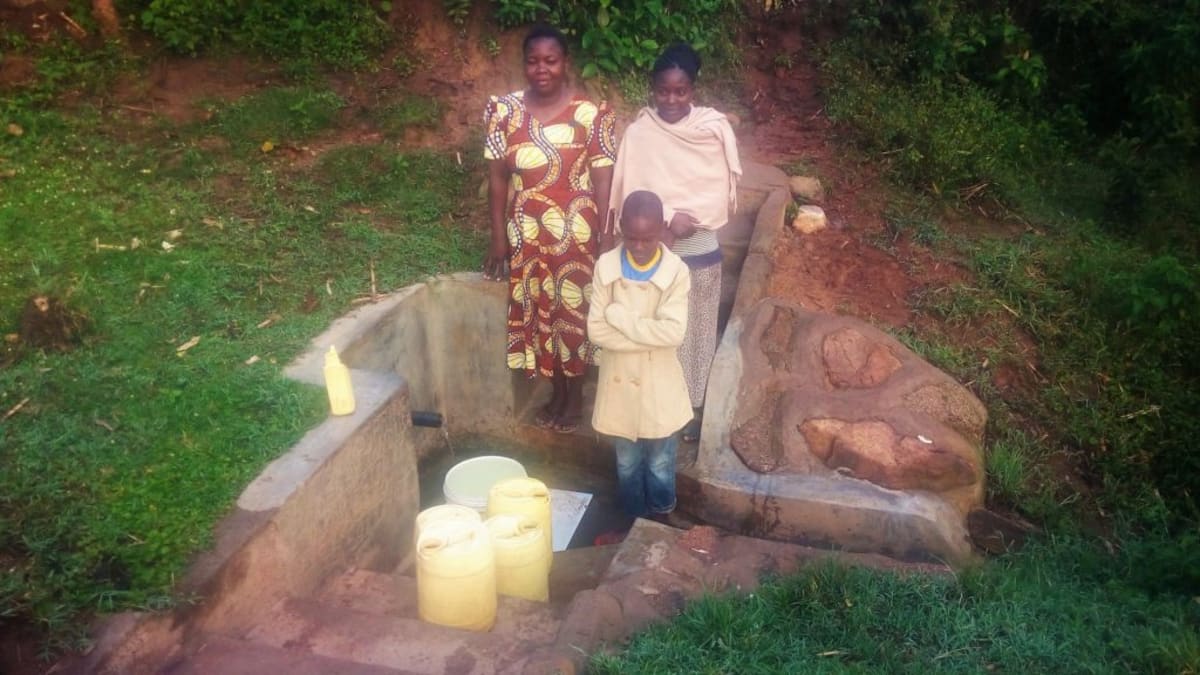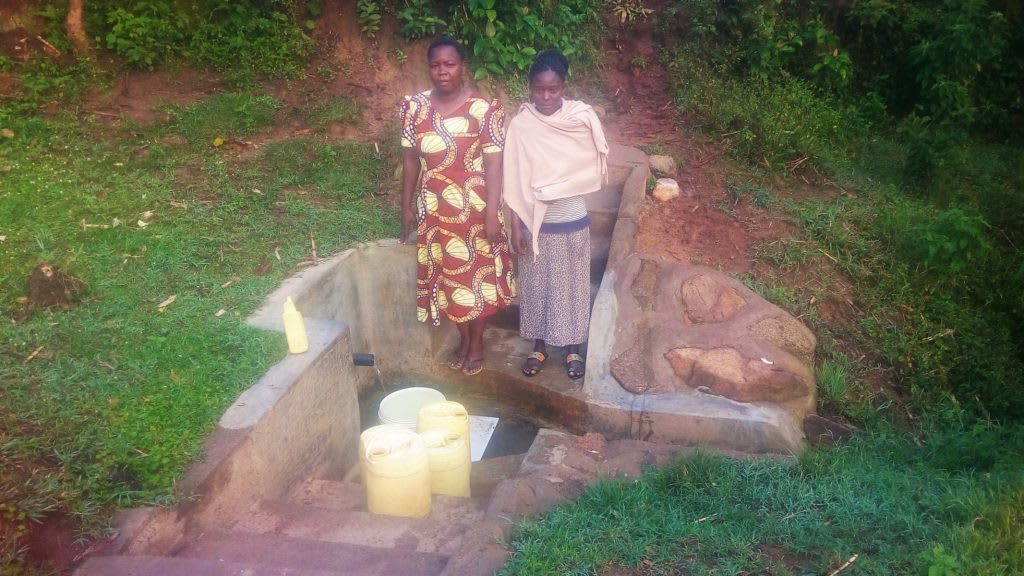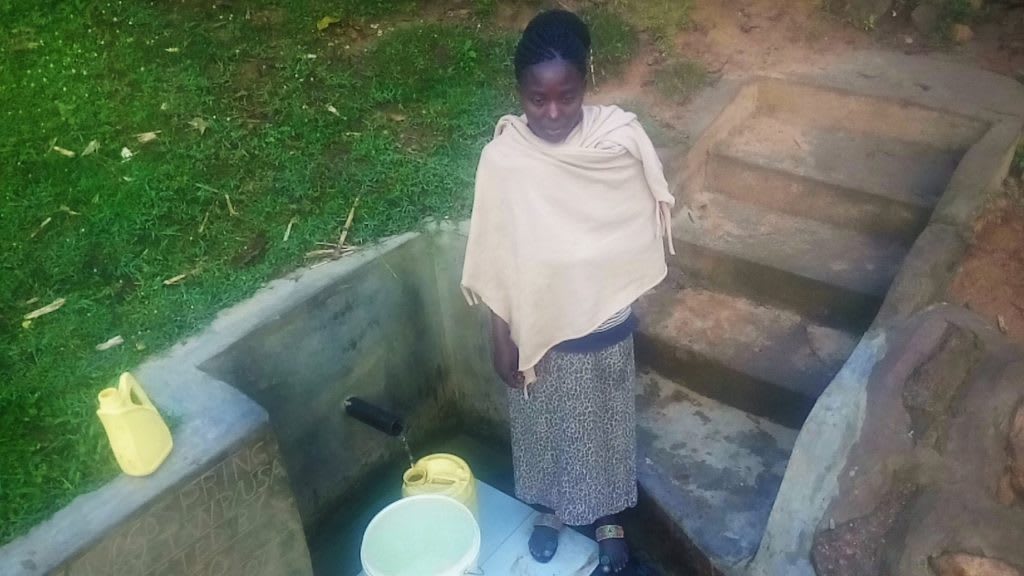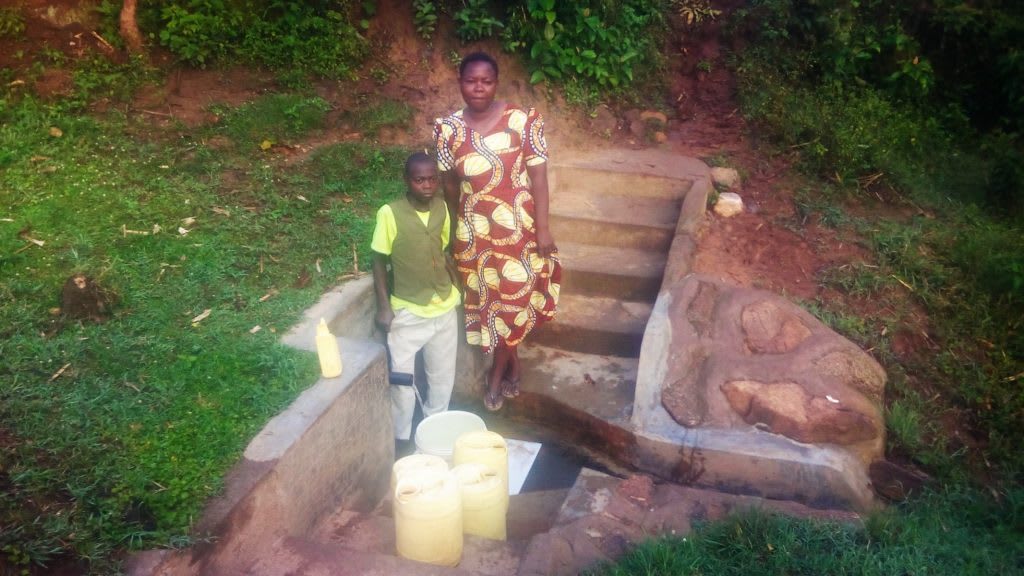This project is a part of our shared program with Western Water and Sanitation Forum (WEWASAFO). Our team is pleased to directly share the below report (edited for clarity, as needed).
Welcome to the Community
This unprotected spring is located in Emmachembe Village, Shikoti location in East Butsotso sub-location within Lurambi Constituency of Kakamega County. The spring is serving a total number of 19 households, totaling 133 community members.
Saul Shivogo Spring is named after its landowner. Mr. Shivogo is friendly and allows his neighbors to benefit from the spring that bubbles up from his land. Take a look at the pictures under "See Photos & Video" tab to find Mr. Saul Shivogo and his wife.
The people using this water are small scale farmers that specialize in growing sugarcane. If not a farmer, the men of the family learn how to make bricks. Whether a farmer or brick maker, everyone wakes up early here; starting with domestic chores around the house and then leaving to earn a living.
Saul Shivogo's community heard about the project implemented at Peter Spring, and immediately paid them a visit to see the work in person. They were impressed with the knowledge of people around Peter Spring, and were impressed with the construction itself. After this visit, they called our staff to invite them to assess their own community's need. Below are the details of our visit.
Water Situation
Saying a spring is unprotected means its water is open to contamination. When we visited the spring in person, we observed proximate latrines, proximate farming, and open defecation. Waste and farming chemicals are washed into the water when it rains! Besides this, animals roam freely and also drink from the water. Community members don't know how to fetch, transport or store their water properly. A container for scooping water floats in the spring when nobody is using it, which also contributes to contamination.
Due to the great number of people drawing water from the spring for domestic use, the water is most often contaminated by human activity. The process of fetching water often wastes a lot of time for women and children who must wait for the water to clear before fetching again. This wasted time could otherwise be used for more profitable economical activities on the farm.
Women and children are primarily responsible for fetching water. Children use lighter containers such as 10-liter jerrycans, and women graduate to 20 liters. Most of these are not covered, so water is open to more contamination on the trip home. Once home, water is kept in these jerrycans until another trip is needed. Before water is consumed, it is boiled. However, cases of typhoid and dysentery are rampant. Community members must then spend their hard-earned money on medical treatment instead of putting it towards education and improved living.
Sanitation Situation
Under 25% of households that use Saul Shivogo Spring have pit latrines. These few latrines are made of mud and are roofed with iron sheets and grass. Few of these have doors, and all are in poor condition. We observed that since so few families have latrines, open defecation is a huge problem here. Eliminating open defecation will be a strong focus during hygiene and sanitation training.
We couldn't find any hand-washing stations, nor did we see many clotheslines or dish racks. Garbage is taken to the edge of the plantation and is piled for either burning or composting.
Plans: Hygiene and Sanitation Training and Sanitation Platforms
Community members will attend hygiene and sanitation training for at least three days. This training will ensure participants are no longer ignorant about healthy practices and their importance. The facilitator plans to use PHAST (Participatory Hygiene and Sanitation Transformation), CLTS (Community-Led Total Sanitation), ABCD (Asset-Based Community Development), group discussions, handouts, and demonstrations at the spring. On the final day of training, participants will select five families that should benefit from new latrines that have sanitation platforms (concrete pit latrine floors).
Based on the initial visit, the facilitator decided to focus on the following training topics:
- Proper handling and treatment of water and food
- Dangers of open defecation
- Protecting, preserving, and managing community water sources
- Practicing personal and environmental hygiene
Training will also inform the community and selected families on what they can do to help make this project a success. They will mobilize local materials such as bricks, clean sand, hardcore, and ballast. The five selected families will also prepare by sinking a pit for sanitation platforms to be placed over. All community members will work together to make sure that accommodations and food are always provided for the work teams.
Plans: Spring Protection
When Saul Shivogo Spring is protected, community members will be able to spend valuable time that was previously wasted on more constructive activities. Water-related diseases and other infectious diseases that plague the community have resulted in members spending a lot of money on medication; sickness also contributes to a high rate of absenteeism in the local school, resulting in poor academic performance.
Protecting the spring will ensure that the water is safe, adequate and secure. Construction will keep surface runoff and other contaminants out of the water. The sanitation facilities and trainings will also enable, enlighten and build the capacity of the community so that they can take matters into their own hands.

 Protected Spring
Protected Spring
 Rehabilitation Project
Rehabilitation Project































